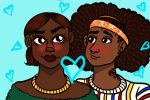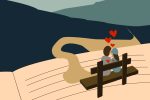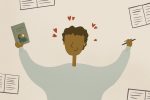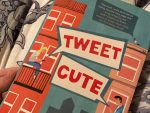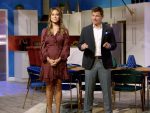Brainy Page-turners
When summer laziness starts settling in, use these books to keep your brain sharp and stay entertained.
By Carli Scalf, Ball State University
Once classes are out and grades are turned in, the last thing most college students want to do is hit the books.
But, summer is an invaluable time for “self-learning,” the kind involving applicable, interesting subjects and personal growth. Like any other muscle, the brain requires upkeep, and summer reading is one of the best ways to stay sharp between semesters. Another perk of self-learning? You don’t even have to know it’s happening. Here are seven books that will impart all kinds of wisdom, from history lessons to modern dating advice, with content so engaging that you’ll forget your brain is getting a serious summer workout.
1. “Modern Romance” by Aziz Ansari
In all my reading, no one has captured the state of dating in 2017 with the same depth of knowledge and touching, funny heart as Aziz Ansari. Ansari, who is known for his role as Tom Haverford on “Parks and Recreation,” and more recently for his Netflix show “Master of None,” seems an unlikely source for a research-heavy book on modern dating.
But with the help of sociology professor Eric Klinenberg, Ansari takes readers through in-depth field research, on everything from texting and dating apps to geographic and cultural influences, to weave together a deep, nuanced picture of modern courtship. The research gives the book its meat, but Ansari’s hilarious observations and relatable voice will have you laughing so much, you’ll forget how complicated searching for love in an information-overloaded world can be.
2. “The Devil in the White City” by Erik Larson
Rare for non-fiction, this book was just as much of a page-turner as any murder-mystery novel. The story is set in 1893 Chicago, where the World’s Fair intertwined the fate of two men, architect Daniel H. Burnham, who helped create the fair, and Dr. H. H. Holmes, who used the allure of the fair to become a prolific serial killer.
The book offers interesting facts about the fair’s impact on innovation (Cream of Wheat and Juicy Fruit were introduced there!) and the seemingly insurmountable obstacles the builders overcame to erect the gleaming, temporary “White City.”

In between the history, however, is a true-life murder story as chilling as any episode of “Criminal Minds.” The balance between the two subjects, the fair and the murders that accompanied it, leads to a well-rounded, fast-paced story jam-packed with historical information.
3. “Early Bird” by Rodney Rothman
Though not as traditionally academic, Rothman’s book is educational in that it will cause readers to confront an oft-ignored topic—elderly people. In 2003, Rothman decided to move to a retirement community in Florida to test out his “golden years” while in between jobs. The result is an extremely funny and often emotional, poignant story about what it means to near the end of your life, and how being elderly is in some ways different, and in others exactly the same, as being young.
Rothman, who wrote for “Late Night with David Letterman” and went on to pen the script for “22 Jump Street,” approaches his subject with rye observations and a full heart. Spending time with this book as a college student will make you see the workforce, aging and your grandparents through new eyes.
4. “The Opposite of Loneliness” by Marina Keegan
Marina Keegan’s posthumous collection of essays and stories is required reading for any college student who feels unsure about the future. The book takes its title from an essay that went viral in 2012 after Keegan’s graduation from Yale and subsequent tragic death just five days later.
Her prose captures the feelings of transition, unsureness and growth that accompany young adulthood. Her work should also serve as an inspiration to any college writer, as all of the stories and essays were written during Keegan’s time at Yale. This is the kind of book that readers will fly through, but refer back to again and again for its wisdom and genuine voice.
5. “The Gene: An Intimate History” by Siddhartha Mukherjee
For ambitious and science-prone readers, Mukherjee’s five hundred-page tome, “The Gene,” will be worth the time invested. The book follows centuries of history on genetics, but makes the science easily digestible through a narrative voice.
Mukherjee previously wrote “The Emperor of All Maladies: A Biography of Cancer,” which won the Pulitzer Prize for General Nonfiction in 2011. Mukherjee’s writing stands out because of his ability to find and relate the humanity present in hard, scientific facts. Journalist Hamilton Cain said in “The Minneapolis Star,” “Mukherjee renders complex science with a novelist’s skill for conjuring real lives, seismic events.” While the science is thick, Mukherjee’s talent will keep readers engaged in the history, dilemmas and controversies surrounding genetics long past the five hundred pages.
6. “The Complete Persepolis” by Marjane Satrapi
If you haven’t tried serious graphic novels or autobiographies, Satrapi’s “Persepolis” is a magnificent place to start. The book is a memoir of the writer’s life growing up in Tehran during the Islamic Revolution. Her story offers the double whammy of providing insight into a world that is unique in intensity, but familiar in the universal questions it asks.
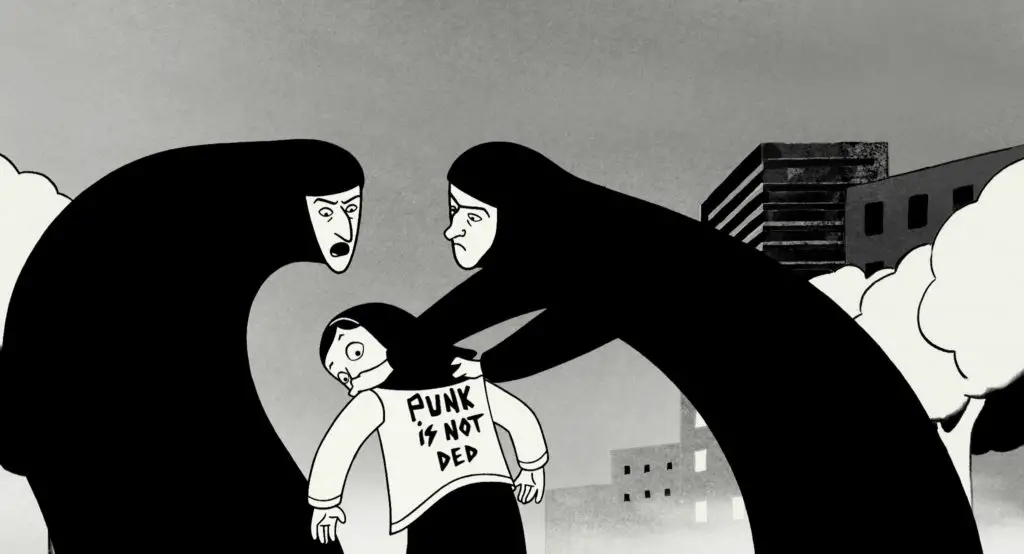
Satrapi’s experiences are greatly informed by her experience of war in Tehran, which highlights the struggle that every child growing into adulthood faces: Who are you, in relation to and separate, from your home and your family? This visual story confronts the question with deep originality and honesty.
7. “Hillbilly Elegy” by J.D. Vance
Finally, for college students interested in the social and cultural problems that seem to have played a heavy role in Donald Trump’s election, J.D. Vance’s memoir is, according to David Brooks from the New York Times, “essential reading for this moment in history.”
The story follows Vance’s own life growing up between Middletown, Ohio, and the back holler of Kentucky (the homeland of his beloved Mamaw and self-proclaimed hillbilly family). Through examining his family’s own struggles to escape poverty, addiction and violence, Vance taps into the larger problems that plague many working class, white Americans in the South and Midwest, tapping into the anger and fear that dominated the voting strategy of many in the 2016 election. Use this book to understand one facet of the deeper social issues that must be addressed in a post-Trump election era.






